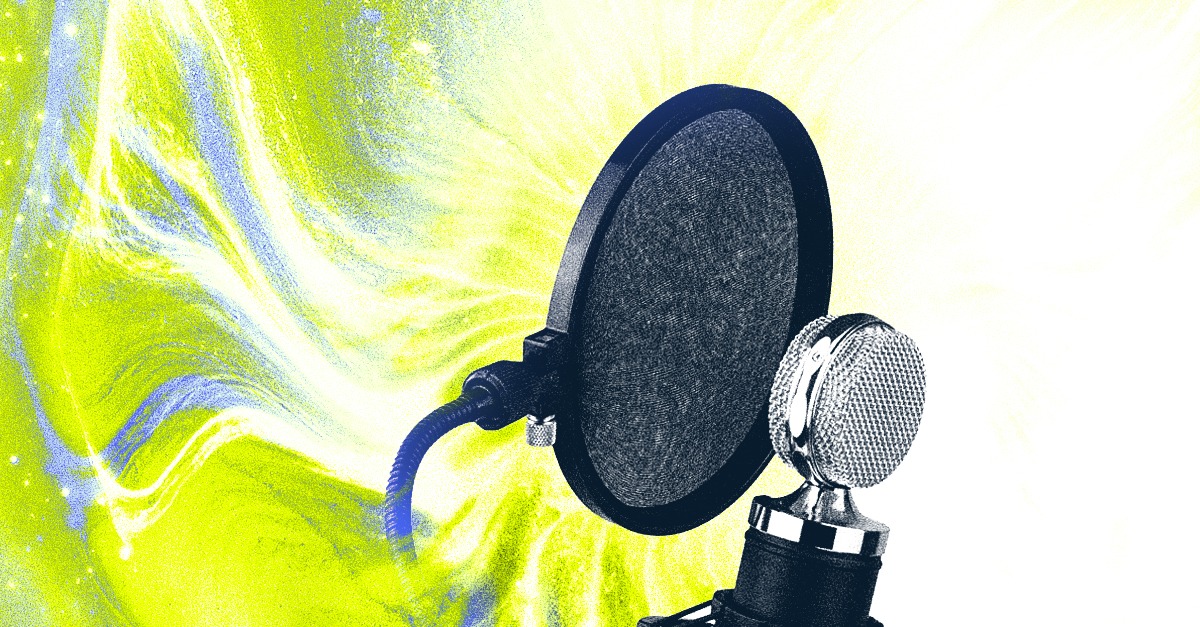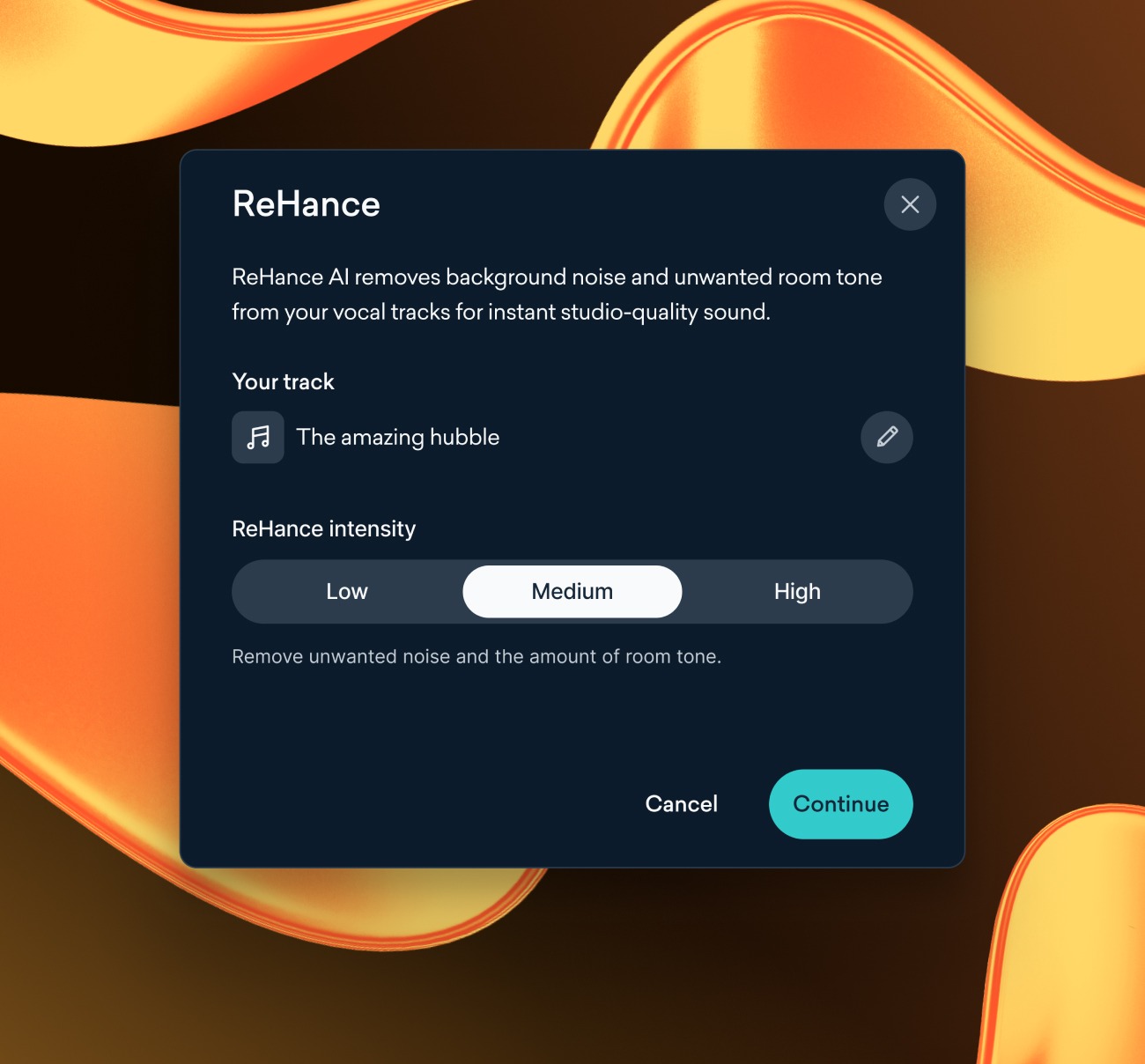
What is a Pop Filter and Why Do You Need One?

When you hear a great song you might assume that lots of money went into producing it, but that’s not always the case.
With a small amount of home studio-friendly audio gear, plenty of musicians are creating music that finds lots of listeners.
One inexpensive and easy-to-use piece of gear is the pop filter. It’s a proven way to make a massive difference in the sound of your vocal tracks.
Pop filters are noise protection filters for microphones.
In this guide, you’ll learn everything you need to know about pop filters and how to use them. Let’s get started!
What is a pop filter?
Pop filters are noise protection filters for microphones. They attach the mic stands and sit between the microphone and vocalist.
While many pieces of recording equipment are highly complex and expensive. Pop filters are very simple, but they’re absolutely essential for recording professional vocals.
Why should you use a pop filter?
You should always record vocals with a pop filter because it’s the easiest way to filter out unwanted sounds. Pop filters are an essential part of the standard setup for vocal tracking, and your recordings won’t sound their absolute best without one.
Pop filters keep pesky plosive sounds from showing up in your vocal takes. Plosive sound can be difficult and even impossible to remove through editing.
Without a pop filter, vocals starting with “p” and “t” and other sounds can produce loud plosives that are hard to get rid of.
That means getting in the habit of recording with a pop filter will save you from lots of headaches during mixing and production.
🧠 Hot tip
What are plosives?
Plosives are explosive sounds created by the rapid release of air. Without a pop filter, vocals starting with “p” and “t” and other sounds can produce loud plosives that are hard to get rid of.
Since it’s not logical or possible for singers to do their thing without creating plosives, every vocal setup needs a pop filter.
This applies for any genre whether you’re tracking rap vocals or a sensual pop ballad.
There’s no rule saying you have to use a pop filter to track vocals. But not using one could produce unpleasant sounds that distract from your music.
How to choose a pop filter
Pop filters can range anywhere from $15 to over $100, and they’re all designed to do the exact same thing. But it’s important to note that the cheapest ones tear easily and can be difficult to attach to your mic stand.
The Nady MPF-6 6-Inch is one of the world’s most popular pop filters. It’s affordable but is known to hold up well in recording settings.
For a little bit more money, the On-Stage Stands ASFSS6GB Dual-Screen is built with two screens to ensure that plosives won’t show up on your tracks.
Some pop filters are built with metal screens instead of mesh filters. The Avantone PS-1 PRO-SHIELD is designed to wrap around your microphone and retain high-frequency details that other pop filters remove.
If you’re feeling ambitious, you can build your own pop filter using inexpensive household materials. It takes time and planning to get the materials to do this, but DIY pop filters have some nice perks.
You can build your own pop filter using inexpensive household materials
One of the biggest advantages to building your own is the ability to easily switch out mesh filters when they tear or get dirty. Conventional pop filters aren’t built to do this.
Some microphones come with foam pop filters that slide on and off, like the SHURE SM7B.
However, sound experts recommend removing them and recording with an attachable pop filter to get the best sound quality.
Pop filters are usually cheap enough that you can easily buy another if you don’t like the one you’re using.
Unlike most studio equipment, you can take a trial and error approach with these without destroying your budget.
Positioning your pop filter
You’ll need to position it in a way that feels natural for the vocalist.
Setting up your pop filter isn’t tricky. The biggest thing to remember is that you’ll need to position it in a way that feels natural for the vocalist. This means that placing it far away from the mic is a bad idea.
Before you begin tracking, have the vocalist try a take with the pop filter in place. If they’re too far away from the microphone, make adjustments.
Every vocalist is different, so take a little time to find what works. But if the only vocalist you record is yourself, you won’t have to do this each time you track.
Recording music is a skill that takes lots of practice to master. Everything from mic positioning to preamp settings can be intimidating to think about if you’re just starting out.
Luckily, pop filters are something you won’t have to worry over. By making them a fixed part of your vocal recording setup, you’ll get the best sound every time you track.
Gear guides, tips, tutorials, inspiration and more—delivered weekly.
Keep up with the LANDR Blog.


